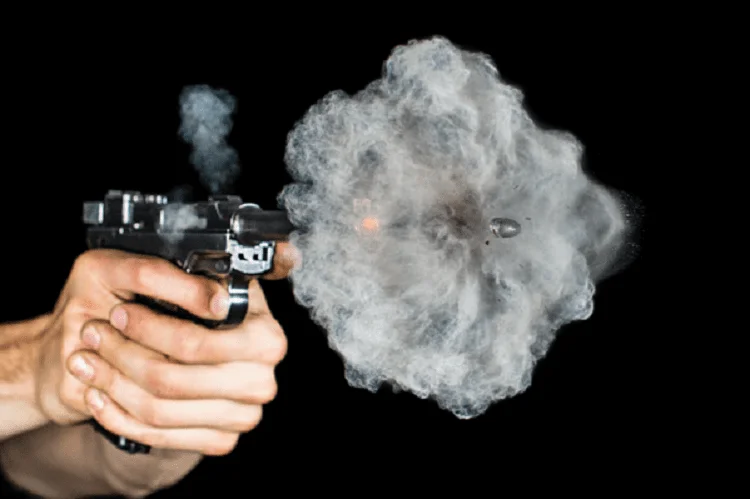Abstract
Gunshot Residue (GSR) is an important forensic clue in firearm-related investigations. It forms as a byproduct of firearm discharge, leaving trace materials that can be analyzed to indicate if a person fired a weapon or was near the incident. This article provides a detailed exploration of GSR, covering its formation, chemical makeup, analysis methods, interpretation challenges, and significance in the justice system.
1.Introduction
Gun-related crimes demand precise forensic tools, among which GSR analysis is notably significant. When a weapon is fired, it releases tiny particles, which may settle on skin, clothing, or nearby surfaces. These traces can provide crucial evidence for investigators. Understanding the science behind these residues is vital for their correct use in criminal inquiries.
2.Chemical Formation and Composition
GSR is produced during the firing of a gun, specifically through the ignition of the primer and combustion of the gunpowder. Traditional primers contain elements like lead, barium, and antimony. The explosion disperses these elements in microscopic particles. These residues can range in shape and size and often have a spherical structure due to the high heat and pressure during firing.
3. Categories of GSR
Inorganic GSR (IGSR): These residues stem from primer components and are rich in metallic content like lead (Pb), barium (Ba), and antimony (Sb).
Organic GSR (OGSR): Originates from propellants and stabilizers. Compounds such as nitroglycerin and diphenylamine fall into this category. Different methods are needed to detect each type effectively.
4.How GSR Distributes
After a gun is discharged, the resulting pressure propels GSR particles outward. The distance these particles travel and the surfaces they settle on depend on several factors, including the firearm's design, the type of ammunition used, environmental conditions, and the shooter’s movements. These variables significantly influence the distribution, pattern, and quantity of residue found at a scene.
5.Techniques for GSR Collection
Collecting GSR efficiently is key for reliable analysis. Common techniques include:
Adhesive stubs: Used to lift particles from skin or clothing.
Swabs: Especially helpful in collecting OGSR from hands or surfaces.
Vacuum collection: Useful for larger surface areas.
Proper procedures must be followed to avoid contamination and ensure traceability.
6. Laboratory Analysis Methods
SEM-EDX (Scanning Electron Microscopy with Energy Dispersive X-ray): Allows visual and elemental identification of particles. It’s the primary method for IGSR.
GC-MS (Gas Chromatography-Mass Spectrometry): Helps detect organic GSR, providing specific profiles for compounds in propellants.
AAS and ICP-MS: These methods detect metallic elements but are less common due to limited ability to distinguish particle origin.
7.Evaluating GSR Findings
Detecting GSR is not always direct proof of weapon discharge. A person might have been nearby or touched a contaminated object. Analysts must consider context, timing, and particle concentration before drawing conclusions. Integration with other evidence increases accuracy.
8.Practical Limitations
GSR analysis faces challenges such as:
External contamination from fireworks or industrial materials.
Loss of residue from washing or movement.
Use of lead-free ammunition.
9.Legal Perspective
In court, GSR findings must be backed by standardized procedures and clear explanations. Experts must avoid asserting guilt based solely on GSR. Instead, they should discuss the likelihood and scenarios in which GSR could be present, supporting their conclusions with reliable scientific data.
10.Innovations in GSR Detection
Advances are making GSR testing more precise and accessible:
Portable detection systems using nano sensors.
AI and machine learning for automated particle analysis.
Expanded detection of OGSR compounds.
Moves toward global standardization of testing practices.
11. Forensic Use Cases
GSR plays an important role in various forensic applications:
Determining whether a suspect fired a weapon.
Clarifying accounts of shooting incidents.
Assisting in identifying shooters in multiple-discharge events.
It works best when used alongside other investigative tools.
12. Final Thoughts
Gunshot residue analysis remains a cornerstone of forensic ballistics. It provides valuable, though not standalone, insights. As technology progresses, its role will likely expand, further supporting the pursuit of truth in criminal investigations.

